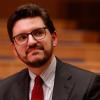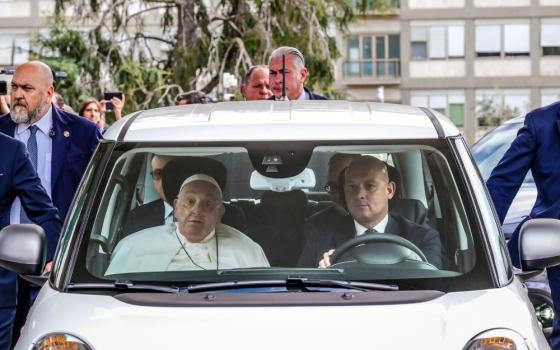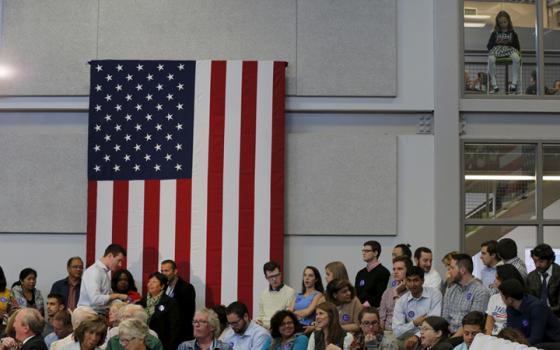The Vatican office responsible for overseeing the doctrine of the global Catholic church has issued its first major document since the March 2013 election of Pope Francis, reflecting on the relationship between the church's bishops and so-called "charismatic movements" that emphasize new styles of evangelization or wider Catholic life.
In the letter Iuvenescit Ecclesia ("The Church Rejuvenates"), the Congregation for the Doctrine of the Faith says the prelates and the new groups have specific obligations to one another and should above all recognize each other as "co-essential" to the life of the global Catholic community.
The bishops, the letter states, must respect "the particularity of individual charismatic groups, avoiding juridical straitjackets that deaden the novelty which is born from the specific experience."
The groups, it says, must respect "the fundamental ecclesial regimen" by inserting themselves into the life of their local church communities and must avoid "any danger that the charismatic entities might be considered in some way as running parallel to the ecclesial life."
The new Vatican document, released Tuesday, is addressed specifically to what it calls "more recent realities that can be described as groups of the faithful, ecclesial movements, and new communities."
Such groups, which can sometimes take on characteristics similar to religious orders but do not normally include the taking of vows, usually involve lay Catholics who gather together for specific purposes or interests.
Some examples include the Focolare Movement, an Italian-founded international organization that promotes universal friendship; the Neocatechumenal Way, a Spanish-founded group that provides post-baptismal formation to adults; and Regnum Christi, a lay movement associated with the Legion of Christ, the religious order founded by the disgraced Mexican sexual abuser Marcial Maciel.
German Cardinal Gerhard Müller, the head of the doctrinal congregation, said at a press conference Tuesday that the new document comes after "many years of elaboration," with his office first beginning a study of the subject in the year 2000.
"It seemed necessary to offer pastors and the faithful a sure and encouraging consideration of the relationship between these gifts that have enlivened the life of the church, especially with the growth of movements and new ecclesial communities in the recent past," said Müller.
Canadian Cardinal Marc Ouellet, head of the Vatican’s Congregation for Bishops, said at the press conference that "there have been some problems" with some of the lay movement groups setting themselves up as a sort of "counter-power to the bishops."
But Müller also added: "Bishops are not the commandants of the gifts of the Holy Spirit. The Holy Spirit is."
In the letter, the doctrinal congregation says the new groups "fill the heart of the Church with joy and gratitude" and that it undertook the writing of its letter in order to examine the "proper exercise" of the different groups’ charisms, or specific identities, in the wider ecclesial community.
While the congregation expresses gratitude to the diverse movements many times throughout the 32-page document, it also makes clear at several points that Catholic bishops around the world should ultimately be in charge of determining which groups are operating appropriately within ecclesial structures.
At one point the document points to the relationship between the apostles Peter and Paul to describe how the bishops and groups should view each other.
"Their attitude is, above all, one of favorable welcoming; they are convinced of the divine origin of the charisms," states the letter, referring to the apostles. "They do not, however, consider these gifts as authorizing one to withdraw the obedience owed towards the ecclesial hierarchy, or as bestowing the right to an autonomous ministry."
"Paul shows himself to be aware of the drawbacks that a disordered exercise of the charisms can provoke in the Christian community," it continues. "The Apostle, therefore, intervenes, with authority, to establish precise rules for the exercise of charisms 'in the Church,' that is, in the gatherings of the community."
"He who has received the gift to lead in the Church has also the responsibility of keeping watch over the good exercise of the other charisms, in such a manner that all contribute to the good of the Church and to its evangelizing mission, knowing well that the Holy Spirit distributes the charismatic gifts to whomever he desires," the letter states later.
"The same Spirit gives to the hierarchy of the Church the capacity to discern the authenticity of the charisms, to welcome them with joy and gratitude, to promote them generously, and to accompany them with vigilant paternity," it continues.
The document also posits an analogy that the two groups exhibit a relationship akin to that between our understanding of God as the Logos, or divine Word, and also as the Holy Spirit.
"The bond in origin between the hierarchal gifts, conferred with the sacramental grace of Orders, and the charismatic gifts, freely distributed by the Holy Spirit, has its deepest roots, therefore, in the relationship between the divine incarnate Logos and the Holy Spirit, who is always the Spirit of the Father and of the Son," it states.
"The two divine missions mutually imply each other in every gift bestowed freely upon the Church," it continues.
Later, the document provides eight criteria that bishops can use in discerning whether a certain group's charism can be properly inserted in the wider church. Among those criteria: the group’s commitment to spreading the Gospel, its profession of the Catholic faith, its witness to a "real communion with the whole church," and its embracing of the "social dimension" of evangelization.
"Reference to the Social Doctrine of the Church is also a decisive factor," it states, citing Francis 2013 apostolic exhortation Evangelii Gaudium. "This cannot be lacking in authentic ecclesial entity."
The congregation’s document is addressed to the world’s Catholic bishops. It has five brief chapters and concludes with a note saying its contents were approved by Francis March 14 and formally signed May 15 by Müller and Archbishop Luis Ladaria, a Jesuit who serves as the secretary of the doctrinal congregation.
The document makes extensive use of footnotes. It cites Francis 12 times over 118 notes. It also cites documents from the Second Vatican Council, the landmark 1962-65 meeting of global Catholic bishops, 31 times.
Among others quoted or cited: fourth century St. John Chrysostom, third century theologian Origen, the fourth century St. Basil the Great, third century St. Cyprian, fourth century Ephrem the Syrian, 19th century Cardinal John Henry Newman, and Popes Pius XII, Paul VI, John Paul II, and Benedict XVI.
[Joshua J. McElwee is NCR Vatican correspondent. His email address is jmcelwee@ncronline.org. Follow him on Twitter: @joshjmac.]




